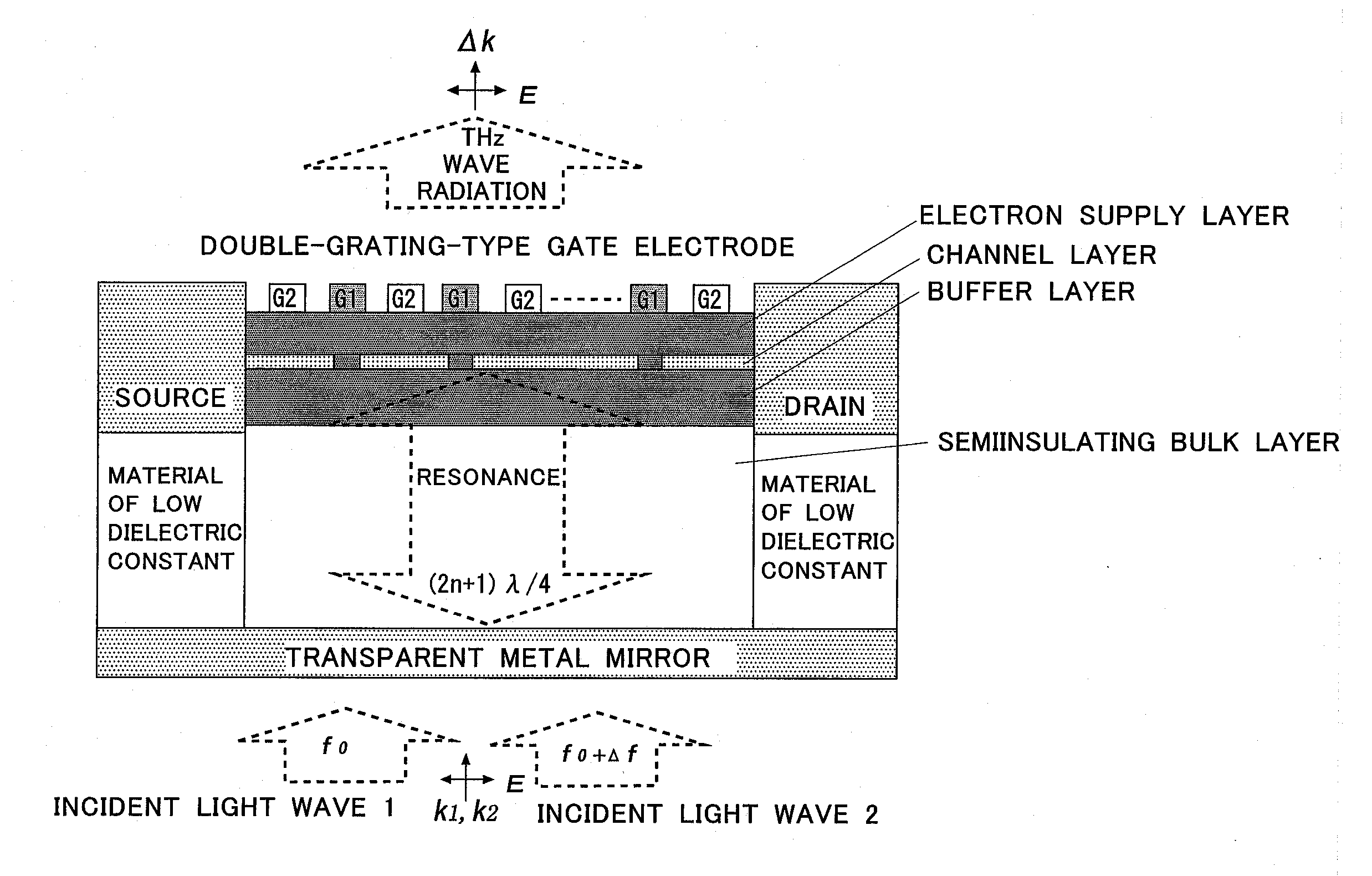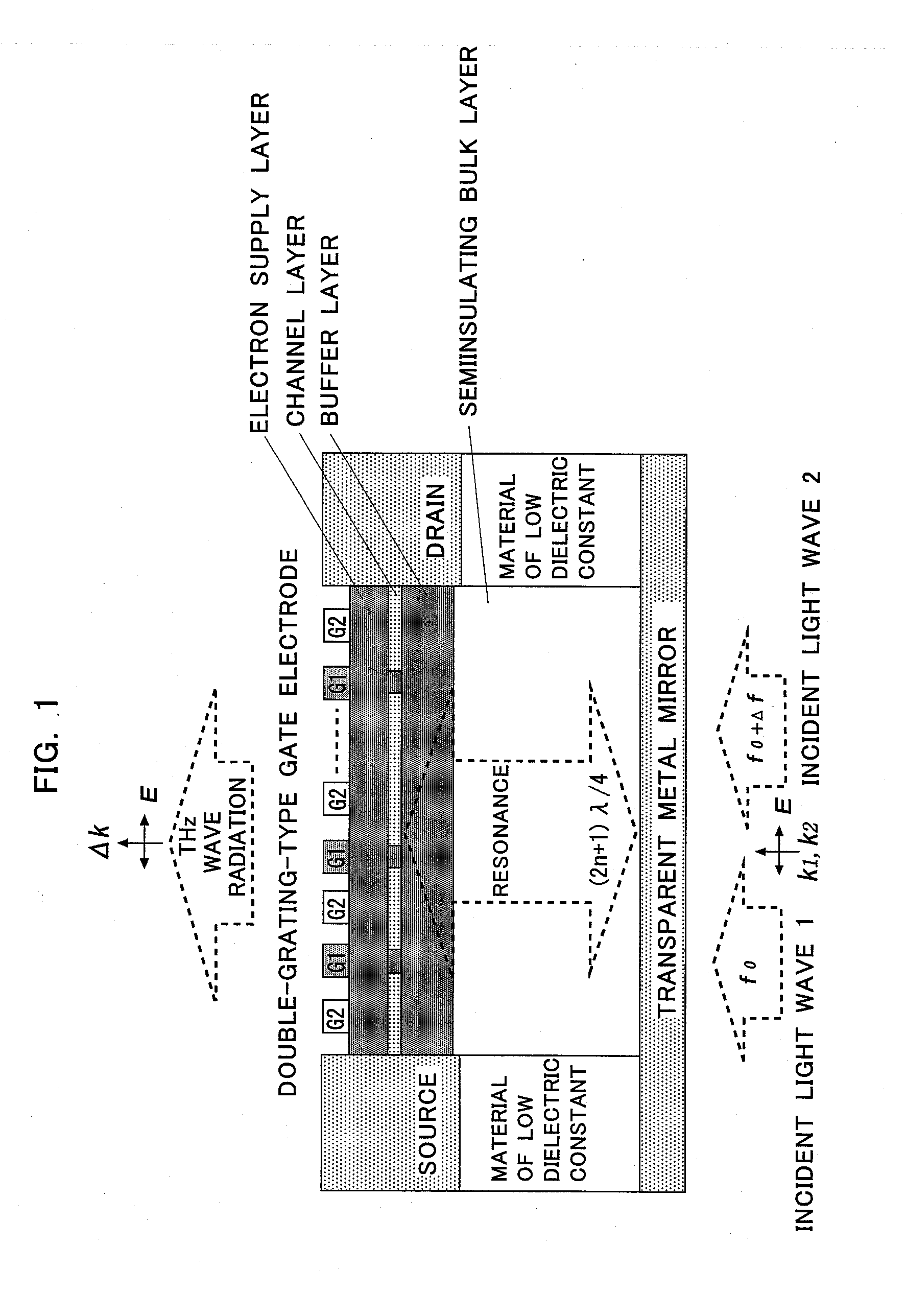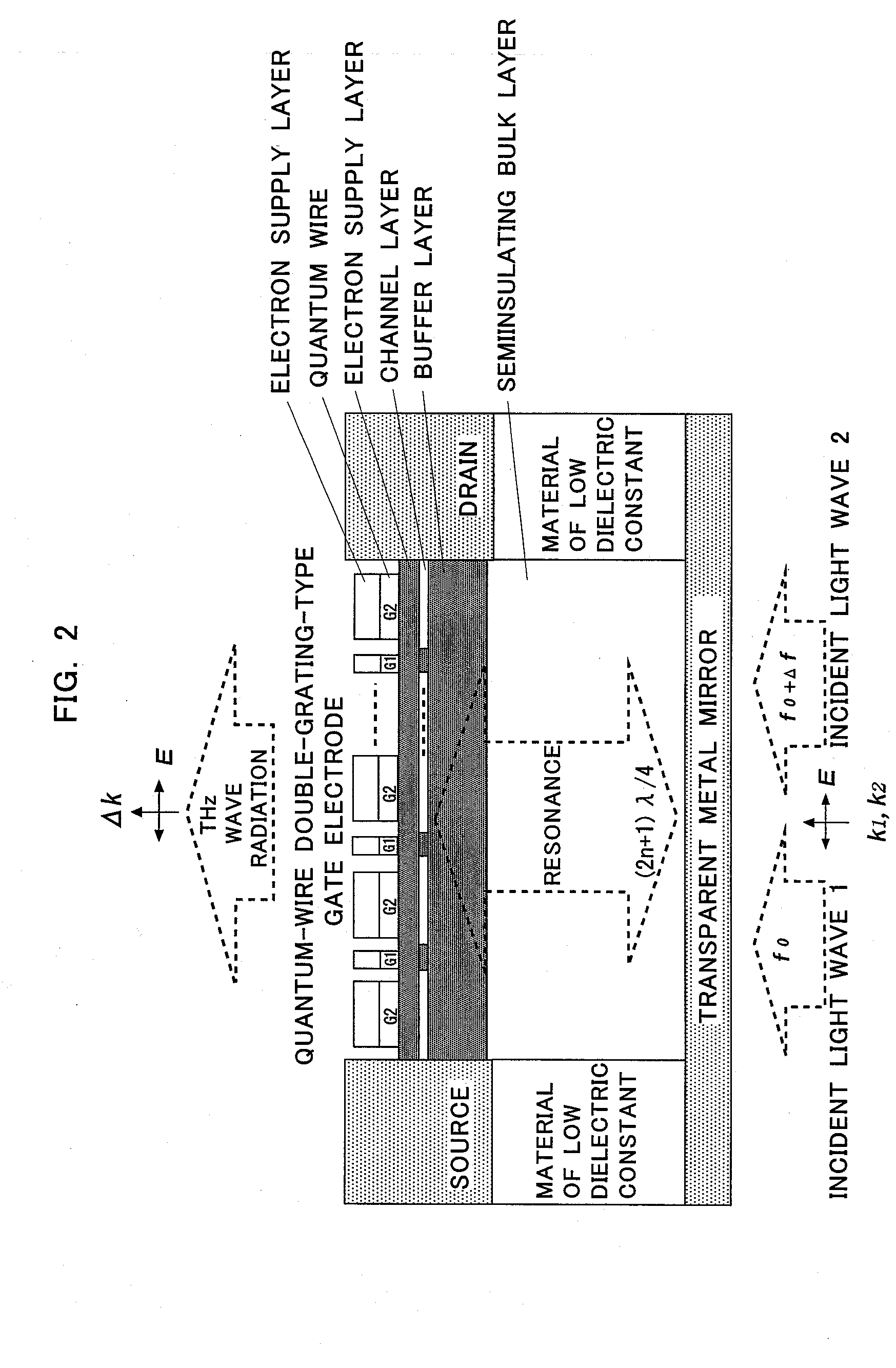Terahertz Electromagnetic Wave Radiation Element and Its Manufacturing Method
a radiation element and electromagnetic wave technology, applied in non-linear optics, instruments, optics, etc., can solve the problems of not yet developing practical elements and short history, and achieve the effect of improving the efficiency of conversion from non-radiation two-dimensional electron plasmon waves to radiation electromagnetic waves and widening the band characteristi
- Summary
- Abstract
- Description
- Claims
- Application Information
AI Technical Summary
Benefits of technology
Problems solved by technology
Method used
Image
Examples
example 1
[0045]A specific structural example of the terahertz electromagnetic wave radiation element shown in FIG. 1 will be illustrated. Semiinsulating GaAs (gallium arsenide) is used as a semiconductor bulk layer, and a dielectric material which is lower in dielectric constant than GaAs, such as Si3N4 (silicon nitride), BCB (benzocyclobuten), or polyimide, is used as a clad layer. The semiconductor heterojunction structure is formed through a process of forming a buffer layer on the semiconductor bulk layer by use of, for example, intrinsic GaAs having a wide band gap, forming an electron traveling layer (channel) thereon by use of intrinsic InGaAs having a narrow band gap, and forming a layer of n-type InGaP having a wide band gap thereon. This n-type InGaP layer is a n-type semiconductor containing an excessive amount of electrons, and plays a role of supplying electrons to the electron traveling layer. This is the same mechanism as in ordinary HEMTs (high electron mobility transistors)....
example 2
[0047]A structural example different from Example 1 of the terahertz electromagnetic wave radiation element shown in FIG. 1 will be illustrated. The semiconductor heterojunction structure can be formed by use of an InP-based heterojunction structure, the semiconductor bulk layer can be formed by use of semiinsulating InP (indium phosphide), and the clad layer can be formed by use of a dielectric material which is lower in dielectric constant than InP, such as Si3N4 (silicon nitride), BCB (benzocyclobuten), or polyimide. The semiconductor heterojunction structure is formed through a process of forming a buffer layer on the semiconductor bulk layer by use of, for example, intrinsic InAlAs having a wide band gap, forming an electron traveling layer (channel) thereon by use of intrinsic InGaAs having a narrow band gap, and forming thereon a layer of InAlAs in which Si is δ-doped as a donor (doped only in a limited small region in the thickness direction) and which has a wide band gap. T...
example 3
[0048]There will be described the results of a test in which the electron density of the two-dimensional electron layer immediately below the gate gratings was modulated at the cycle of the gate gratings.
[0049]The threshold gate bias at which an electron is inducted in the channel of the electron traveling layer is represented by Vth. For example, in the case of an InP-based device (see Example 2), when the potential of the gate grating A is set to, for example, Vth+0.3 V, and the potential of the gate grating B is set to a higher level; for example, Vth+1.0 V, the channel immediately below the gate grating A has a two-dimensional electron density of 1011 to 1012 cm−2, and the channel immediately below the gate grating B has a high electron density of 1014 cm−2 or higher as in semi-metal. Meanwhile, when the potential of the gate grating B is set to a level lower than that of the gate grating A; for example, Vth−0.2 V, the channel immediately below the gate grating B has a low elect...
PUM
 Login to View More
Login to View More Abstract
Description
Claims
Application Information
 Login to View More
Login to View More - R&D
- Intellectual Property
- Life Sciences
- Materials
- Tech Scout
- Unparalleled Data Quality
- Higher Quality Content
- 60% Fewer Hallucinations
Browse by: Latest US Patents, China's latest patents, Technical Efficacy Thesaurus, Application Domain, Technology Topic, Popular Technical Reports.
© 2025 PatSnap. All rights reserved.Legal|Privacy policy|Modern Slavery Act Transparency Statement|Sitemap|About US| Contact US: help@patsnap.com



